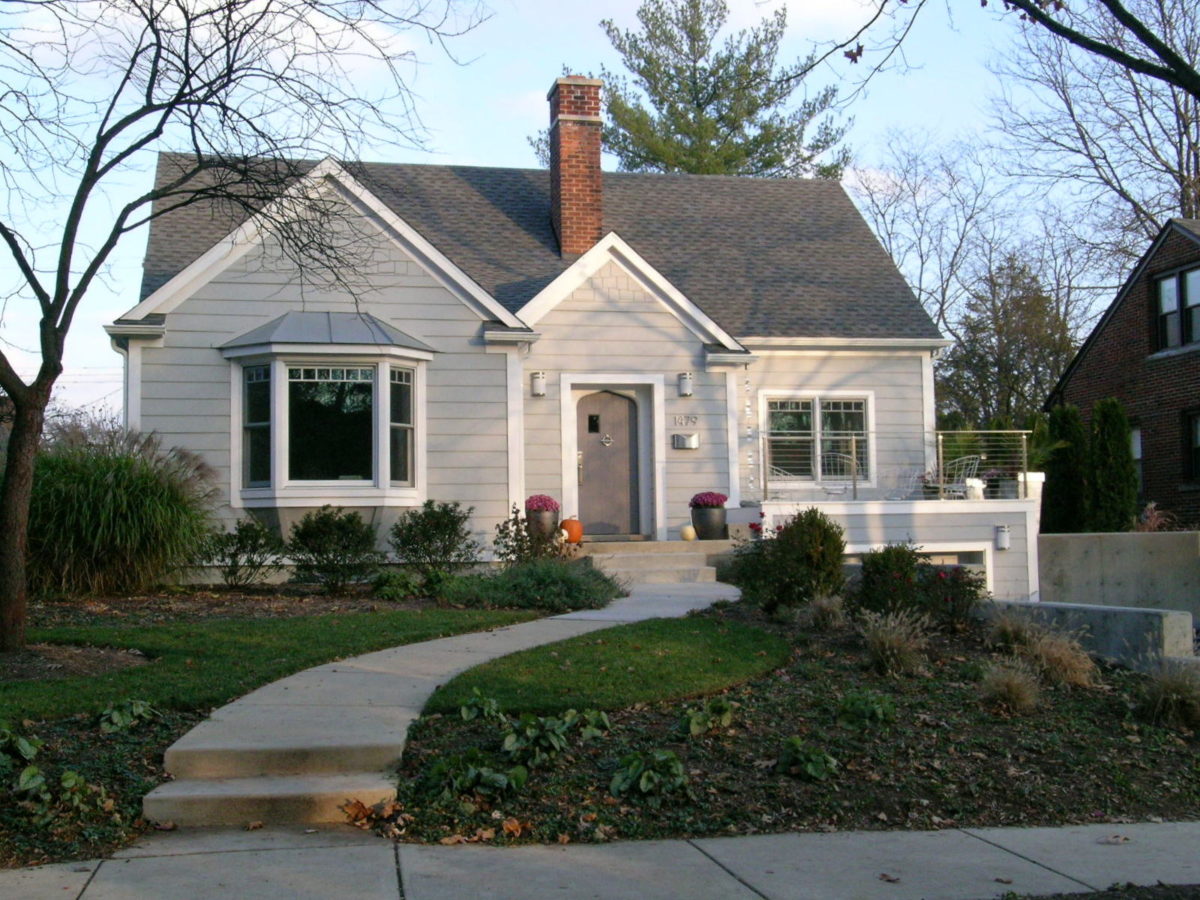Table Of Content

'It’s also flexible in how it can be configured and beautiful for all of those reasons. According to Barry Goralnick, a New York-based designer who grew up surrounded by Cape Cod houses in Massachusetts, these smaller iterations have their perks. Despite having a timeless style, Capes have evolved over the years to a few different subcategories, says My Move. Originating in Cape Cod, Massachusetts, in the 17th CE, these houses are a stereotype for the perfect American Cottage that you have envisioned.
Cape Cod house photo tour: Stylish Sandwich bungalow near beach - Cape Cod Times
Cape Cod house photo tour: Stylish Sandwich bungalow near beach.
Posted: Thu, 04 Jan 2024 08:00:00 GMT [source]
Plan: #196-1183
Or maybe you’re considering building elsewhere but crave quintessential New England charm? The typical Cape Cod house plan is modest in size, rectangular, symmetrical and accommodating to a variety of interior layouts. If you’re going to build a home you plan to stay in for the rest of your life, consider selecting a Cape Cod house plan that features the master suite on the main level, as this will make aging in place far easier. Windows play a big factor in creating the charm and efficiency of Cape Cod house plans. The rest of a Cape Cod style house’s exterior is pretty minimal in terms of ornamentation and usually boasts clapboard siding or wood shingles.
Defining elements and characteristics of a Cape Cod house

Upon a closer look, in addition to a shed-like front door shelter, rain and snow can be redirected away from the house by gutters and downspouts and window lintels. For the practical New Englander, architectural detail is often for very practical reasons. Though Cape Cod homes are known and loved for their simplicity, they were ultimately designed for colder, snowier climates — right down to their steep roofs.
How to find Cape Cod-style houses for sale in your area
From the bespoke versions put up by modern reproduction firms to custom builders throughout the region, the style survives and thrives, sometimes in the most contemporary ways. ZeroEnergy Design, also in Boston, specializes in cutting-edge energy-efficient homes, often achieving net-zero buildings (making as much energy as they consume). Certainly, Cape Cods lend themselves to coastal elements inside, but they're just as easy to decorate in an eclectic, new traditional, or Scandi-inspired style. With a look that's both historic and understated, it's easy to find a design aesthetic that will be harmonious with a Cape Cod cottage. Though this historic style originated as far back as the late 17th century, it has experienced resurgences in popularity many times since then. While Cape Cods first started sprouting up in Massachusetts, they were common in most of New England by 1740.
Colonial Revival (1930s–1950s)
To get an accurate idea of how much the Cape Cod home of your dreams may cost, America's Best House Plans offers a Cost to Build Estimator. According to Home Edit, many Capes feature wood trim, but in more modern takes, it's bright white to contrast any other timeless pieces in the home. The outlet also notes that natural materials are the best to decorate with in Cape Cod homes, since it highlights those wood elements and brings the build back to its early roots. Unzipping through the interiors, hardwood flooring is a must specification in the Cape Cod homes. While choosing a color palette, it is always a smart move to go for a chic, subtle design shade that lets the light bounce away while making enough room for you to relax.
Cape Cod house for sale photos: Falmouth oasis with pool at $998K - Cape Cod Times
Cape Cod house for sale photos: Falmouth oasis with pool at $998K.
Posted: Thu, 22 Feb 2024 08:00:00 GMT [source]
The modern day Cape Cod houses you see in nearly every part of North America are modeled after the rugged architecture of colonial New England. In the 1930s, the Depression and Colonial Revival combined to make Cape Cod-style homes regain popularity as an economical building style. In the 1940s and 1950s, Cape Cod homes were a widespread answer to the post-war housing boom. Even in supersized 21st-century America, Cape Cod-style homes retain a nostalgic popular appeal with new builds of all sizes, from sprawling homes to tiny houses inspired by the original Cape Cod architectural style. Traditionally, the space under the roof of a Cape Cod house wasn't used as a livable second story.
Cape Cod House Plans, Floor Plans & Designs
Cape Cod homes have an unfinished or partially opened crawl space underneath the house, more commonly lined with stone, brick or brick veneer, as specified. Adding nooks and cranny for storage purposes can really add a serious charm to the house. Meanwhile, in the interiors, the low-heightened ceilings and bold shutters account for heat conservation and blocking of harsh winter winds.
House Features
These homes were built to help house families and veterans returning from war. Like many of the style's other characteristics, Cape Cod homes typically feature neutral exterior color schemes. The original shake shingles are often left to weather gray, while other Cape Cod homes sport painted shingles. Most of the color schemes, like those of Colonial-style homes, are very neutral and austere. Patterned brickwork, diamond-paned windows, and a slate roof can give a 20th century Cape Cod the flavor of a Tudor Cottage home. At first glance, you might not think of this house as a Cape Cod—especially because of the brick exterior.
It's also common for many modern Cape Cods to have an attached or detached garage, front walkway, and back patio or porch. A Cape Cod-style house with an open-floor plan eliminates most non-structural walls to create an open and airy flow through the kitchen, dining area, and living room. If the homeowner chooses to add a wing or two and still retain the Cape Cod structure, they can extend a single-story off one or both sides of the home. Occasionally, such extensions may not be possible on a narrow lot, and the home can only be built up to add more living space. In keeping with a more traditional style, you can find floor plans with the front entry or foyer that opens onto a stairway, with a bedroom, study, or office on the right side and a formal living room on the left.
Modern Cape Cod interior design opts for a white color palette to add light to the home and create a larger feel in the space. Unlike Victorian homes popular in the early 20th century, Cape Cod homes are distinguished by their simple architectural designs. Because of their modest geometric forms, Cape Cod houses are particularly well-suited for additions. This Cape Cod home seems very traditional—no dormers, a center chimney, and not even any window shutters.
The Reverend Timothy Dwight IV (1752–1817), president of Yale University from 1795 to 1817, coined the term "Cape Cod house" after a visit to the Cape in 1800. Early Capes used wainscoting on the interior walls to prevent moisture from building up during humid Cape Cod summers. The living area is on the main floor, which consists of a living room, dining room, kitchen, and an optional bedroom. The homes are typically 1 or 1 1/2 stories, usually featuring low ceilings, although modern Capes have increased the ceiling height. Today, these homes can range from a traditional 3+2 to a luxury Cape Cod house with all the modern amenities. Wills did away with the functional interior and renovated it for 20th-century life while keeping the exterior features home buyers love, even today.
The half-Cape has a single, off-center door with two windows to one side. The layout usually centers around a large central fireplace and the common room or kitchen, with the bedrooms, pantries, parlor, and rear entry branched off the central kitchen. The style fell out of popularity temporarily but had a resurgence post World War ll, known as the Cape Cod Revival.
They feature similar rectangular floor plans, though they often include at least two stories. Aside from the square footage, colonial homes typically employ gambrel roofs—a main feature of Dutch colonials—while Cape Cod houses traditionally make use of gable roofs. Colonial houses may also include more ornamentation, like the use of columns, which is less common on traditional Cape Cod homes.
Traditionally, Cape Cod floor plans are symmetrical, with an equal number of windows on either side of the door. A three-quarter Cape has two windows on one side of the door and a single window on the other side of the door. Quite often, along with a full second-story expansion, today's Cape Cod homes will also feature a bonus space of some type, thereby increasing the square footage and flexibility of the house to suit the modern family. Additionally, the updated Cape Cod plans may have adopted the open floor plan layout to improve the traffic flow, livability, and efficiency of the home's interior. The exterior steep roofs are symbolic of a typical cape cod house that is designed solely for the purpose of minimizing the weight of the snow.
This style has become a quintessential American home whose practicality is outweighed only by its charm. Homeowners can also create a backyard living area without interfering with the Cape Cod home’s quaint, historic charm. You can find patios and decks in many Cape Cod backyards with comfortable furniture for entertaining friends and family. Winters can get cold in New England, so a fire pit would be a nice addition to enjoy the fall and winter seasons.

No comments:
Post a Comment